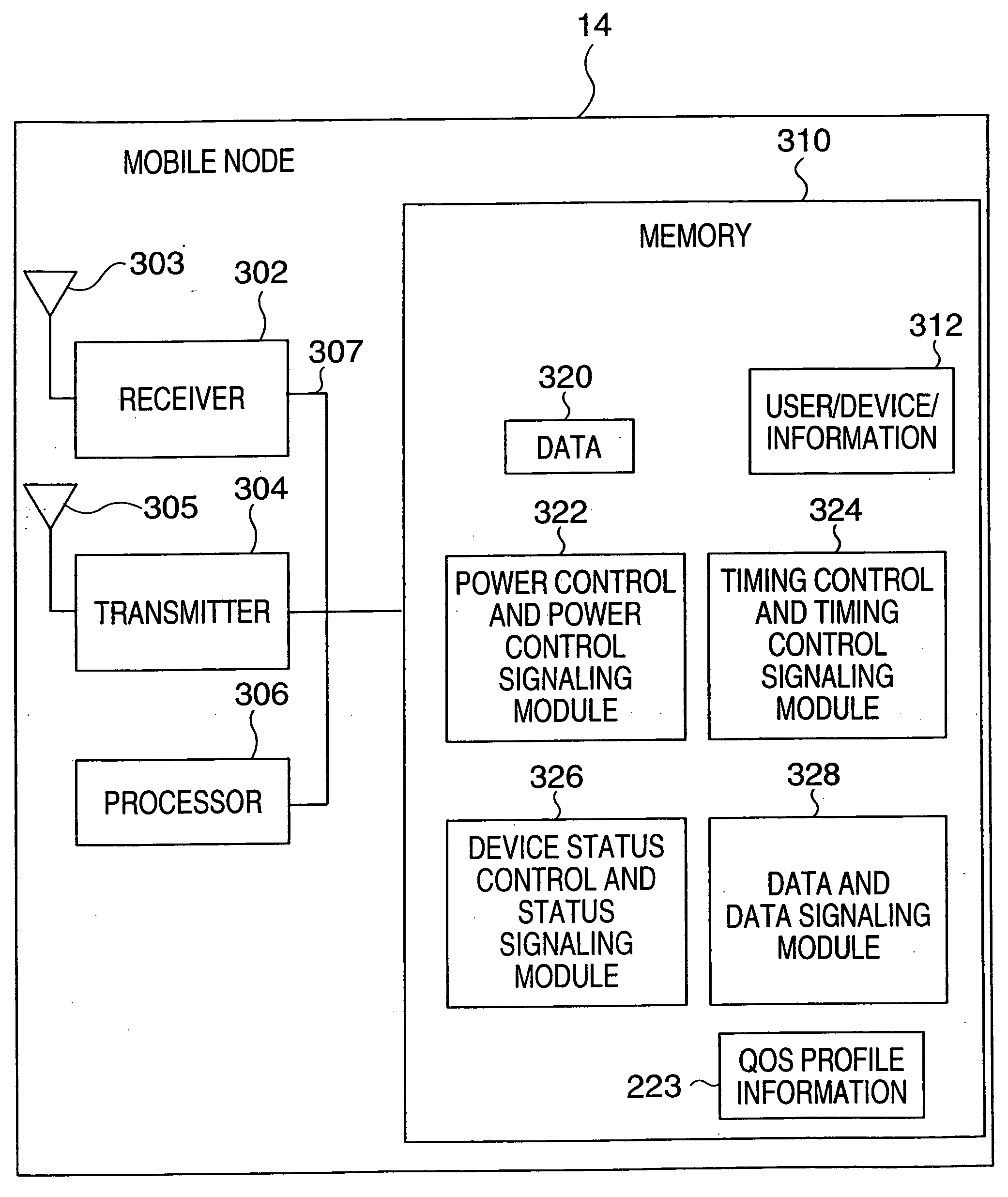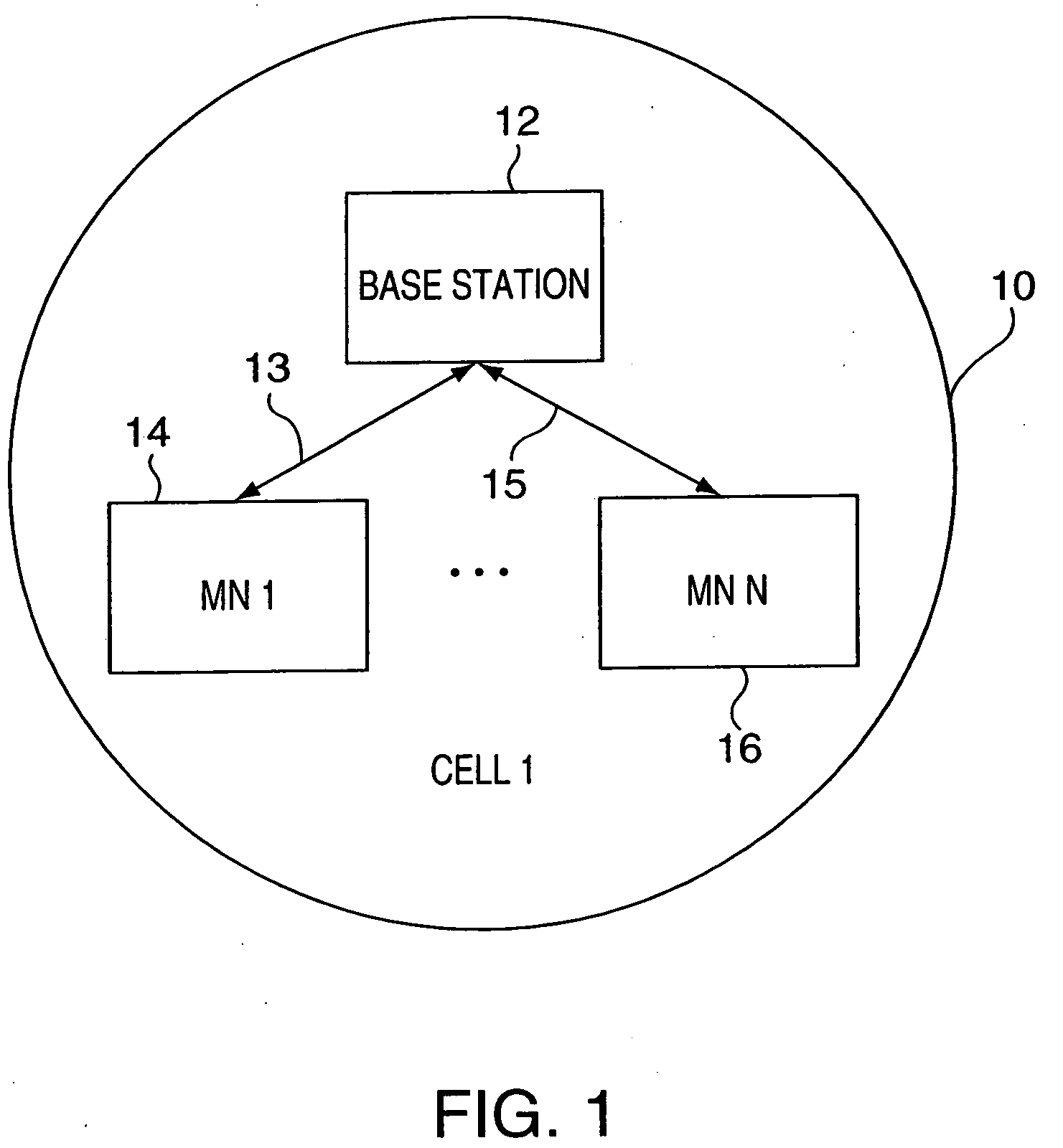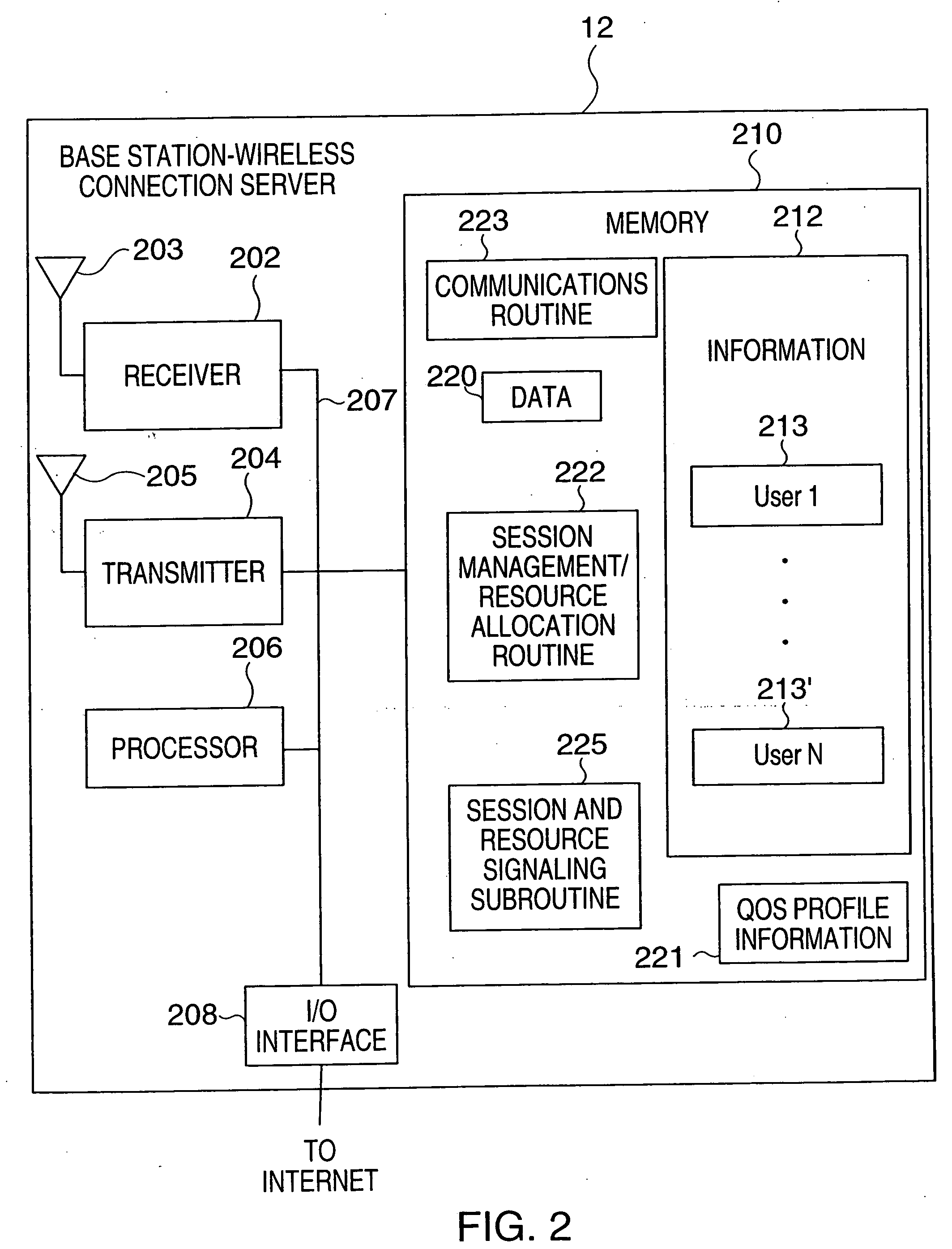Power and timing control methods and apparatus
- Summary
- Abstract
- Description
- Claims
- Application Information
AI Technical Summary
Benefits of technology
Problems solved by technology
Method used
Image
Examples
Embodiment Construction
[0053]FIG. 1 illustrates a communications cell 10 implemented in accordance with the present invention. A communications system may include multiple cells of the type illustrated in FIG. 1. The communications cell 10 includes a base station 12 and a plurality, e.g., a number N, of mobile nodes 14, 16 which exchange data and signals with the base station 12 over the air as represented by arrows 13, 15. In accordance with the invention, the base station 12 and mobile nodes 14, 16 are capable of performing and / or maintaining control signaling independently of data signaling, e.g., voice or other payload information, being communicated. Examples of control signaling include power control, downlink channel quality reports, and timing control signaling.
[0054]FIG. 2 illustrates a base station implemented in accordance with the present invention. As shown, the exemplary BS 12 includes a receiver circuit 202, transmitter circuit 204, processor 206, memory 210 and a network interface 208 cou...
PUM
 Login to View More
Login to View More Abstract
Description
Claims
Application Information
 Login to View More
Login to View More - R&D
- Intellectual Property
- Life Sciences
- Materials
- Tech Scout
- Unparalleled Data Quality
- Higher Quality Content
- 60% Fewer Hallucinations
Browse by: Latest US Patents, China's latest patents, Technical Efficacy Thesaurus, Application Domain, Technology Topic, Popular Technical Reports.
© 2025 PatSnap. All rights reserved.Legal|Privacy policy|Modern Slavery Act Transparency Statement|Sitemap|About US| Contact US: help@patsnap.com



